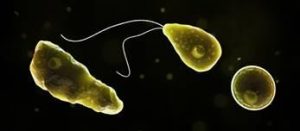JEFFERSON CITY, Mo. – The Missouri Department of Health and Senior Services (DHSS) has been notified of a Missouri resident with a laboratory-confirmed infection of Naegleria fowleri. Naegleria fowleri is a microscopic single-celled free-living ameba that can cause a rare life-threatening infection of the brain called primary amebic meningoencephalitis (PAM). The Missouri patient is currently being treated for PAM in an intensive care unit of a hospital.
The ameba is commonly found in warm freshwater such as lakes, rivers, and ponds; however, PAM is extremely rare. Since 1962, only 154 known cases have been identified in the United States. The only other case identified among a Missouri resident occurred in 1987, and currently, no additional suspected cases of PAM are being investigated in Missouri.
The source of the patient’s exposure is currently being investigated by public health officials. Local and out-of-state activity are being considered. Recreational water users should assume that Naegleria fowleri is present in warm freshwater across the United States; however, infection remains rare.

Although a rare occurrence, people become infected by Naegleria fowleri when water containing the ameba enters the body through the nose from freshwater sources. The Naegleria fowleri ameba then travels up the nose to the brain where it destroys the brain tissue. This infection cannot be spread from one person to another, and it cannot be contracted by swallowing contaminated water.
“These situations are extremely rare in the United States and in Missouri specifically, but it’s important for people to know that the infection is a possibility so they can seek medical care in a timely manner if related symptoms present,” said Dr. George Turabelidze, Missouri’s state epidemiologist.
People can take actions to reduce the risk of infection by limiting the amount of water going up the nose. These actions could include:
- Hold your nose shut, use nose clips, or keep your head above water when taking part in water-related activities in bodies of warm freshwater.
- Avoid putting your head under the water in hot springs and other untreated thermal waters.
- Avoid water-related activities in warm freshwater during periods of high-water temperature.
- Avoid digging in, or stirring up, the sediment while taking part in water-related activities in shallow, warm freshwater areas.
(These recommendations are best practices but not based on scientific testing since the low numbers of infections make it difficult to show effectiveness.)
Those who experience the following symptoms after swimming in any warm body of water should contact their health care provider immediately as the disease progresses rapidly:
- Severe headache.
- Fever.
- Nausea.
- Vomiting.
- Stiff neck.
- Seizures.
- Altered mental status.
- Hallucinations.
For more information about Naegleria fowleri, visit the CDC’s webpage.
About the Missouri Department of Health and Senior Services: The department seeks to be the leader in protecting health and keeping people safe. More information about DHSS can be found at health.mo.gov or find us on Facebook and Twitter @HealthyLivingMo.
